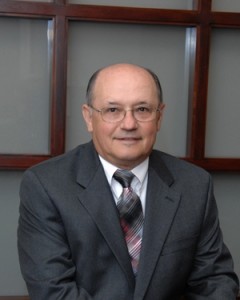
Golf could be called the go-to sport of the insurance industry, so it’s safe to assume that most insurance professionals know what a putter is – a tool for cursing and hurling to the ground after a missed shot, right?
But how many know that “putter” – the word – could be used to describe what’s happening in the property/casualty insurance business right now, especially in the excess and surplus lines sector?
Bill Reynolds does. Using the letters p-u-t-t-e-r, Reynolds, president of national E&S carrier Atlantic Casualty Insurance Co., outlined how he views the current state of the industry and where it’s headed in 2012.
As Reynolds sees it pricing, underwriting, technology, talent, education and relationships tell the story of what’s most important in the E&S world.
P: Pricing
“There’s no question pricing’s going up. … We’re seeing it,” Reynolds said during a presentation at the annual meeting of the Texas Surplus Lines Association in November 2011. “There are a lot of factors to that right now; one of them is obviously the reinsurance market.”
Indeed, German reinsurer Munich Re AG has deemed 2011 the most expensive year for the insurance industry in terms of natural disaster losses. Insured losses in 2011 totaled $105 billion, topping the previous record of $101 billion set in 2005.
Reynolds explained that he recently spent some time with reinsurers and came away with an unsettling scenario. “Visiting with their property actuaries was kind of scary. They had devised a model which said to get their combined ratios down to what are respectable numbers for them, the rates which they would have to charge … were so high nobody could afford to buy them,” Reynolds said.
The actuaries had to back off from those numbers, Reynolds said, but he expects rates to inch up on renewals, not just on property insurance but on liability, professional liability and other lines, as well.
He said insurers are beginning to offset the higher cost of reinsurance with price increases of their own. “Is it enough to cover the losses? Probably not. But it’s a start at least to move the pricing up to where it needs to be. Let’s face it folks, since 2004 all we’ve done is just drive the price down, down, down.”
Redundancy in carriers’ reserves has been nearly depleted, Reynolds said, which also adds pressure to raise rates.
“You’re going to have to get the premium to the point where you can make a profit on your product that you sell,” he said. “If you don’t price your product such that you can make an underwriting profit on it you’re just heading for trouble.”
U: Underwriting
There’s a trend toward more consistency in the underwriting process that wasn’t there two years ago, Reynolds said. “I see more and more companies having their underwriters and actuaries talk for a change as opposed to being talked to,” he said. “I think the actuaries and underwriters realize that we as a unit have to make a profit for the company.
“Where the actuaries point out the deficiencies in rate, underwriters are saying okay maybe we can do this, maybe we can do a coverage thing, maybe we can do a pricing thing to get the book a little bit more profitable, more balanced.”
Historically E&S companies have outperformed the admitted markets, Reynolds said. One reason for this is that E&S insurers provide coverage best suited for the client, and that coverage is often restricted. Also, they try to provide it for an adequate price.
While in recent years admitted companies targeted business that has typically gone into the E&S sector, much of that business is now coming back out of the admitted market.
“Why? Because it was written previously at a low rate with broad coverage and now it’s coming back to us. Go figure,” Reynolds said.
The E&S companies are “not there to write the standard business,” he said. “We write the business nobody else wants. To do so we have a certain expertise; we have a certain pricing methodology; we have a certain underwriting discipline. And if we follow it correctly we’ll make a profit.”
T: Technology
Companies’ investments in technology now are beginning to pay off, Reynolds said. Technological advancements are enabling companies “to laser in on certain classes of business that are very, very profitable for them and make the rate adjustments such that they can take that core business and increase it.”
In addition, technology has gone one step further, Reynolds said. The technology being used by successful E&S companies today is “designed to enhance the relationship between the company and the wholesaler, and furthermore, to enhance the relationship between the wholesaler and [their] client.”
Companies that “get it,” Reynolds said, are using technology that helps the wholesaler manage “back of the house” details such as keeping up with rates and forms.
Insurers that are able to help a wholesaler reduce expenses, be more efficient and provide better client service will get that wholesaler’s business, he said. “You have to focus on what it is that your customer wants.”
T: Talent
Despite the popular conception that the insurance industry is facing a talent shortage, Reynolds says that not only are there young people in the ranks, they have a wealth of knowledge of business and technology that he didn’t see when his own career was developing.
“The positioning that [younger professionals] have in terms of being able to take over an agency and run it is amazing,” Reynolds said. “The talent pool today in the E&S arena is stronger than it’s ever been. In every agency that I do business with … the talent level is there.”
The key for more seasoned professionals is to embrace the talent, not fear it. “The ideas that we had in 1984, ’85 were great, they worked at that time,” he said. But now, “it’s a whole new world and if we don’t accept it, we’re going to be left behind.”
E: Education
The wealth of educational opportunities available through organizations like NAPSLO, AAMGA, state surplus lines and agent associations, and colleges and universities “were not available to us back in the ’80s,” Reynolds said. Companies that take advantage of all the available tools will be the ones going forward.
R: Relationship
The last letter, R, “is the most important letter because without the R, the P for pricing, the U for underwriting, the T for technology, the T for talent and the E for education mean nothing. … The R is the relationship,” Reynolds said.
The relationship is the most important piece of the E&S transaction, he said. Between companies, wholesalers, insureds, regulators and talent, “it’s all about the relationship.”
Even with the most advanced pricing methodology, the best underwriting techniques, the sharpest technology, and the highest level of talent, “it doesn’t matter at the end of the day if a wholesaler’s underwriters and a company’s underwriters don’t get along,” he said.
More importantly, companies have to provide wholesalers with tools that enhance the wholesaler/client relationships.
“To me, that’s the key to this whole business,” Reynolds said.
Topics Talent Excess Surplus Tech Underwriting Reinsurance Market Training Development
Was this article valuable?
Here are more articles you may enjoy.



 Cargo Owners in Baltimore Disaster Face ‘General Average’ Loss Sharing, MSC Says
Cargo Owners in Baltimore Disaster Face ‘General Average’ Loss Sharing, MSC Says  Grand Jury Indicts ‘Hole in Won’ Owner on Prize Insurance Fraud Charges
Grand Jury Indicts ‘Hole in Won’ Owner on Prize Insurance Fraud Charges  DeSantis Signs Bill Barring Local Worker Heat Protection Measures
DeSantis Signs Bill Barring Local Worker Heat Protection Measures  If US Inflation Reflected Rising Home Insurance Costs, It’d Be Even Higher
If US Inflation Reflected Rising Home Insurance Costs, It’d Be Even Higher 

